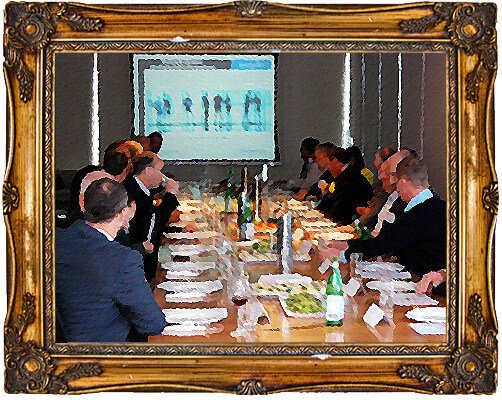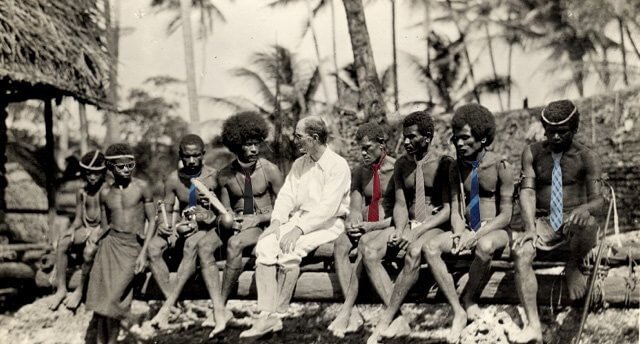A Comparative Analysis of The Curatorial Presentation of Mesoamerican Art at the North Carolina Museum of Art
The West Building at the North Carolina Museum of Art (NCMA) contains a small collection of Mesoamerican artifacts dating from the Late Formative all the way through the Classic Period (300 B.C. to 900 A.D.). In order to access the exhibit, entitled “Arts of the Ancient Americas,” visitors must walk through the West building past the African Art Collection, as well as an exhaustive European collection, opposite a Classical collection and finally through the Ancient Egyptian Art collection. The various exhibits of the museum are “showcased in an environmentally conscious building that creates a stunning contemplative setting” (NCMA website). The archaeologist, Richard G. Lesure (80) explains that art, as a universal concept, “is seen as a medium through which people interpret, manipulate and transform their worlds.” However, Shelly Errington (221) warns us that “the vast majority of productions that have been made by human beings for the last thousand years were not intended to be ‘art’ in the sense that emerged in Europe in the late eighteenth century.” It is clear from curatorial decisions that one of the main goals of fine art museums is to portray museum objects so that they are no longer “understood in and of themselves, but as part of broader fields of representation, mediation and communication” (Geismar, 267). However, it cannot be assumed that Western concepts of art, as “objects suitable for individual contemplation, objects made by named individual artist-geniuses, objects divisible into five major beaux arts” are relevant to all cultures (Errington, 221). It is then essential to their larger objective that curators maintain an acute sensitivity to the differences and particularities surrounding culture-specific notions of art in order to provide visitors with an accurate depiction of these broader fields.





The archaeological artifacts of ancient Mesoamerica are displayed within vitrines, atop pedestals as unique and valuable art pieces arranged both geographically, such as the display case featuring vessels and dog effigies from Colima state, and stylistically, such as the celt and temple effigies of the Mezcala style. As Errington (222) points out, objects are often aestheticized in fine art museums by shedding their “surrounding realistic diorama, which signifies practical use value, and by removing it from taxonomic-series displays, which signify that it is one of the many variations of a type.” Erringtons’ critical analysis of the curatorial processes of fine art museums suggests that what is lost is not necessarily the contexts of use, but the “cultural construction of human perception and the culturally specific nature of human experience” (Brumfiel, 124). Despite the removal of the objects from dioramas that serve to demonstrate their “performative and useful contexts,” several of the objects in NCMA’s Arts of the Ancient Americas exhibit include descriptions that focus primarily on their use.










For instance, the description for the incense burner from the Tiquisate region of Guatemala dating from 300-600 A.D. explains that it, “probably was placed on an altar or on the steps leading into a shrine. It held burning coals and copal incense” and visitors are given an in-depth explanation of the rules and practices of a Mesoamerican ballgame in the description of the ceremonial ball game yoke in the Veracruz style dating from circa 250-900 A.D. (NCMA exhibit text). There are some obvious complications in conveying the culturally specific meanings of particular objects of ancient societies with no record of the original creator, little historical documentation and often-unfinished archaeological research. In comparison, descriptions of objects made by highly celebrated artists from well-documented societies in Europe and the post-Columbian Americas elaborate on the thought processes and backgrounds of individual artists as well as their relations to the history and greater cosmologies of their societies.
Nevertheless, descriptions that serve to provide some deeper understanding of the human experience are dramatically unequal between exhibits of well-documented, largely Western, cultures, and exhibits of ancient cultures that are under-documented. It is clear that, given curatorial decisions made when information is available, the ultimate function of art pieces within fine art museums is to serve as reference points to cultural knowledge. In his chapter entitled, “The Construction of Authenticity,” the anthropologist Rolf Lindner (81) makes an analogy between art and culture around the concept of the “pure gaze,” explaining that “the aesthetic attitude, which finds expression in the pure gaze, is characterized by the separation of the perceived object from its surroundings, by disregard for the historical context and, above all, by indifference to the existence of the object. It is the image of a dying culture that must be captured, not the culture itself.” That is, generic meta-narratives concerning the extinction of past societies inevitably takes precedence over the imparting of knowledge on the nature of human experience in a comparative study between documented and under documented artistic representations.
The task of the curator is to engage the community by translating art pieces and exhibits into tangible experiences meant to broaden visitors’ perception of what it means to be human. In her chapter titled, “Decolonizing Design Innovation,” Elizabeth Tunstall (244) challenges the false distinctions between art, craft and design in an argument that echoes Lesures’ universal definition of aesthetic objects as “repositories, transmitters, and vehicles in the exploration and construction of knowledge.” The historical record may be implicated in the curatorial process that elaborates on the culturally specific nature of human experience of some cultures while obscuring others. However, fine art museums, as cultural institutions whose primary goal is to educate and to stimulate, should be at the forefront of those informed of the archaeological, anthropological and other historical research that is relevant to the cultures and societies that their exhibits represent. There can be nothing more engaging, and even revitalizing, than learning of the creative agency in which diverse cultures and people have articulated and made tangible their world-views with objects throughout time and space.
Works Cited
Brumfiel, Elizabeth M.; Salcedo, Tamara; Schafer, David K. “The Lip Plugs of Xaltocan: Function and Meaning in Aztec Archaeology.” Economies and Polities in the Aztec Realm. Hodge, Mary G; Smith Michael E., eds. Austin: University of Texas Press.
Errington, Shelly. “Progressivist Stories and the Pre-Columbian Past: Notes on Mexico and the United States.” Collecting the Pre-Columbian Past. Boone, Elizabeth Hill, ed. Washington, D.C: Dumbarton Oaks Research Library and Collection.
Geismar, Haidy. “Museum + Digital = ?.” Digital Anthropology. Horst, Heather A.; Miller, Daniel. London: Berg Publishing.
Lesure, Richard G. “Shared Art Styles and Long-Distance Contact in Early Mesoamerica.” Mesoamerican Archaeology. Hendon, Julia A; Rosemary, Joyce A., eds. Oxford: Blackwell Publishing.
Lindner, Rolf. “The Construction of Authenticity: The Case of Subcultures.” Locating Cultural Creativity. Liep, John, ed. London: Pluto Press.
North Carolina Museum of Art. “Expansion.” NCMA. Web. 25, Nov. 2014. http://www.ncartmuseum.org/expansion/
Tunstall, Elizabeth (Dori). “Decolonizing Design Innovation: Design Anthropology, Critical Anthropology, and Indigenous Knowledge.” Design Anthropology: Theory and Practice. Gunn, Wendy; Otto, Ton; Smith, Rachel Charlotte, eds. New York: Bloomsbury Press.
Recommend0 recommendationsPublished in Archaeology





Responses